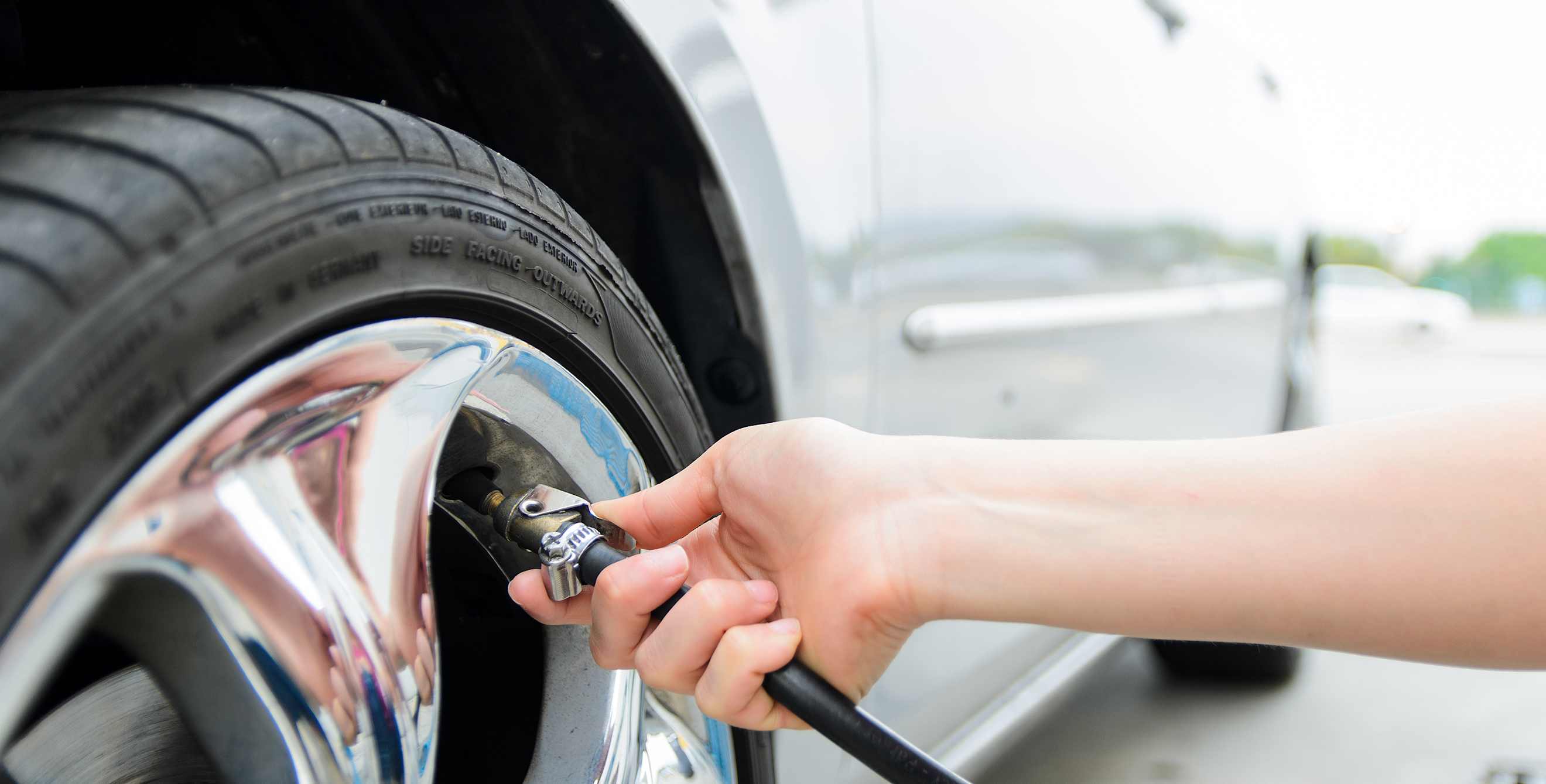
How to Care for Your Tires in 5 Minutes
Give your tires a monthly checkup to ensure they stay up to standard.

Proper tire care and safety is simple and easy. The Rubber Manufacturers Association recommends getting in the habit of taking five minutes every month to check your tires, including the spare. Your tire checkup covers four things: pressure, alignment, rotation, and tread.
Pressure
Underinflation is the leading cause of tire failure. It results in unnecessary tire stress, irregular wear, loss of control, and accidents. A tire can lose up to half of its air pressure and not appear to be flat.
The right amount of air for your tires is specified by the vehicle manufacturer. You can find it listed on the vehicle door edge, door post, glove box door, or fuel door. It is also listed in the owner’s manual. Use a tire gauge on cool tires—hot or cold temperatures can change your pressure readings.
Alignment
Hitting a curb or pothole can throw your front end out of alignment and damage your tires. Have your alignment checked periodically as specified by your owner's manual—or if your vehicle is pulling or vibrating.
Rotation
Regularly rotating your vehicle’s tires will help ensure more uniform wear. Unless your owner's manual has a specific recommendation, the guideline for tire rotation is approximately every 6,000 miles. If your tires show uneven wear, ask your mechanic to check for and correct any misalignment, imbalance, or other mechanical problems before you have the tires rotated.
Tread
Replace your tires before the tread is worn down to 1/16 of an inch. An easy test: place a penny into a tread groove. If part of Lincoln’s head is covered by the tread, you’re driving with the proper amount of tread. If you can see all of his head, it's time for new tires.
Advanced and unusual wear can reduce your tires’ grip in adverse conditions. Built-in treadwear indicators, or wear bars, which look like narrow strips of smooth rubber across the tread, will appear flush with the tread when the tire is worn out. Check for uneven wear, high and low areas, or unusually smooth spots. While you’re at it, check the sidewalls for gouges, cuts, bulges, or other irregularities.
Tire trouble? Contact AAA to re-inflate your existing tire, install your spare, or have your vehicle towed to get a repair or replacement.